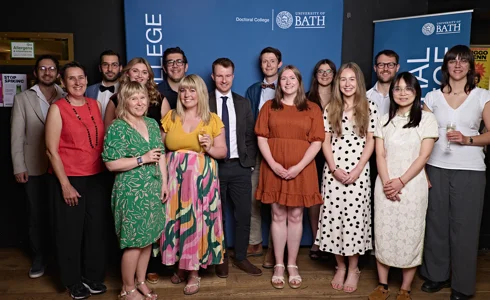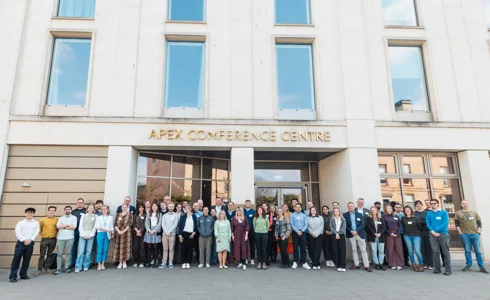
Cosmin Mudure
Theme
Low Carbon FuelsProject
Simply the best? Rapid AI-driven screening of porous materials for hydrogen purification and low carbon fuelsSupervisor(s)
Prof Tina Düren, Dr Matthew Lennox, Prof Semali PereraBio
Cosmin graduated from the University of Nottingham in 2023 with an integrated MSc (Hons) in Biochemistry. Before starting his degree, he worked with Johnathan Todd's group to explore osmolyte synthesis in diatoms as part of a Nuffield Research Placement at UEA. During his Masters year, he studied novel ferroelectric materials in Kathrine Inzani's group using Density Functional Theory, a computational method used in solid state chemistry research. His project gave him insights into alternative approaches to practical laboratory research; he aims to use his experience in computational modelling to solve sustainability challenges within the automotive sector.
Fun Facts
- On my bucket list? Witnessing the Northern Lights, publishing a novel, mastering the art of Italian cooking, going on a silent retreat, and, oddly enough, learning to yodel in the Swiss Alps.
Simply the best? Rapid AI-driven screening of porous materials for hydrogen purification and low carbon fuels
Composite materials (materials made of two or more component materials) have excellent mechanical properties whilst remaining lightweight. They are highly customisable, which enables a variety of different manufacturing methods and starting materials to be used. However, traditional composite materials such as carbon fibre still require a lot of energy and resources to manufacture, making them less desirable from an environmental standpoint.
Bio-derived materials are a continually growing area, with natural fibre reinforced composites of particular interest. Natural fibres such as flax are capable of matching the performance of glass fibre at a lower density and a lower cost. Bio-derived materials can also be engineered to be biodegradable, whereas conventional composite materials are extremely hard to dispose of at end of life. Natural fibre materials uptake in automotive manufacturing in the past was mainly for non structural applications, but more structural applications have been seen in recent years. One such case of a high performance structural application has been seen in F1, with McLaren replacing their carbon fibre seats with a flax composite version said to reduce the CO2 equivalent by 85%. There is great potential for natural fibre composite materials to replace traditional materials and reduce the environmental impact of automotive manufacturing.
This project will look into using natural fibres to design and develop novel sustainable composite materials for EV battery module casing using a holistic approach to take into consideration numerical, analytical and experimental approaches with the objective of minimising environmental impact whilst maximising performance

